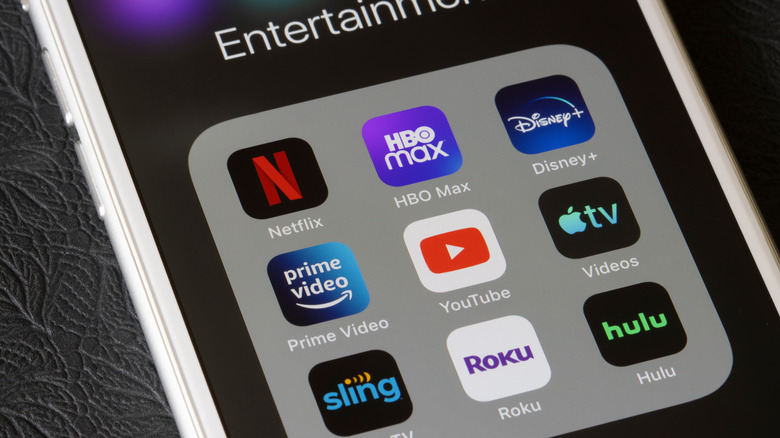Streaming Is Getting More Expensive, And These Are The Worst Providers
Streaming has become the dominant home entertainment format for the most part. After all, why bother with hundreds of cable channels with nothing on when you can get a streaming subscription to watch what you want, when you want? However, because streaming has effectively become the new normal, streaming service providers have begun looking into ways to have it replace cable in the financial and viewing sense.
According to statistics gathered by the Wall Street Journal, the average cost of ad-free streaming is on a major uptick, with projections placing prices 25% higher overall by this time next year. Now that streaming has become the dominant format and nobody wants cable anymore, platform owners have more room to experiment with pricing and see how much they can get away with charging. The primary impetus for these price hikes is recouping years worth of cumulative losses from the time when you could get streaming service on the cheap.
The worst offenders
According to S&P Global Market Intelligence statistics, the average United States streaming household pays around $29.64 monthly for multiple streaming service subscriptions. That's about twice as high as a multi-streaming package cost in 2018. In all likelihood, the growth of streaming services was heavily accelerated by the COVID-19 pandemic, where every platform had a captive audience stuck at home in quarantine.
Currently, the three streaming services that have seen the largest price hike since their inception are Hulu, Max, and Netflix. For ad-free streaming plans, Hulu charges $17.99, Max charges $15.99, and Netflix charges $15.49. It's also worth noting that Disney+ has seen the widest range in ad-free pricing since its launch, originally costing $6.99 versus its current price of $13.99.
These price hikes are part of a provider effort to test "churn," an industry term that refers to a subscriber's willingness to stay on board in the face of rising subscription costs. If providers can find ways to hike prices without increasing churn, that means more net profit. So far, the major avenues for increasing revenue are hiking the price of ad-free subscription tiers and offering cheaper ad-supported tiers, which generate passive income from ad partners.
The only radical factor in this equation is customer defection, in which users immediately end subscriptions after watching what they want, but providers are researching ways to clamp down on that as well, such as bundling services.

